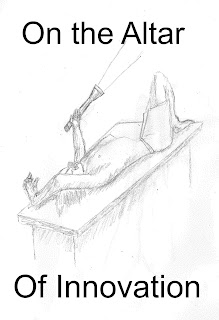Will we see higher
levels of innovation and skill development in the future? When
entrepreneurship creates new products, it
forces human capital upward as companies adapt this
technology to create competitive
advantages. Today's employment market is filling vacancies quickly and may soon begin
to innovate again to find greater competitive strengths.
Spurts of technological advancement are followed by greater demands for market skills that raise human capital formation (Gomes, 2011). As companies adapt to new technology, they will seek to hire and train employees to use this technology. Employment expectation will adjust education and schooling to meet new job needs.
As the labor market moves closer to maximum employment capacity the cost of wages rises and pushes companies to adjust their strategies to focus on new competitive strengths. Technological advancement and integration is one approach that raises productivity and profit margins. The new demands will leave a gap in the employment market that takes time to fill.
The process of entrepreneurship, implementation, and human capital adjustments is a cyclical process where improvements in human capital can lead to greater adaptation. As businesses improve their competitiveness and hire additional skilled employees to fill vacant positions, the market becomes a draw for investment.
The development of society requires thinkers to create new ideas and spread those ideas to others where mass adaptation takes place. Today’s business world is more accustomed to innovation than at any other time in the past and will realign its educational and employment practices to encourage greater innovation. The speed of information transference will make innovation mass consumption faster thereby creating shorter product development times. Society will be in a constant process of change as innovation and skill development grow together.
Gomez, M. (2011). Stages of Economic Development in an Innovation-Education Growth Model. Studies in Nonlinear Dynamics and Econometrics, 5 (4).
Spurts of technological advancement are followed by greater demands for market skills that raise human capital formation (Gomes, 2011). As companies adapt to new technology, they will seek to hire and train employees to use this technology. Employment expectation will adjust education and schooling to meet new job needs.
As the labor market moves closer to maximum employment capacity the cost of wages rises and pushes companies to adjust their strategies to focus on new competitive strengths. Technological advancement and integration is one approach that raises productivity and profit margins. The new demands will leave a gap in the employment market that takes time to fill.
The process of entrepreneurship, implementation, and human capital adjustments is a cyclical process where improvements in human capital can lead to greater adaptation. As businesses improve their competitiveness and hire additional skilled employees to fill vacant positions, the market becomes a draw for investment.
The development of society requires thinkers to create new ideas and spread those ideas to others where mass adaptation takes place. Today’s business world is more accustomed to innovation than at any other time in the past and will realign its educational and employment practices to encourage greater innovation. The speed of information transference will make innovation mass consumption faster thereby creating shorter product development times. Society will be in a constant process of change as innovation and skill development grow together.
Gomez, M. (2011). Stages of Economic Development in an Innovation-Education Growth Model. Studies in Nonlinear Dynamics and Econometrics, 5 (4).



